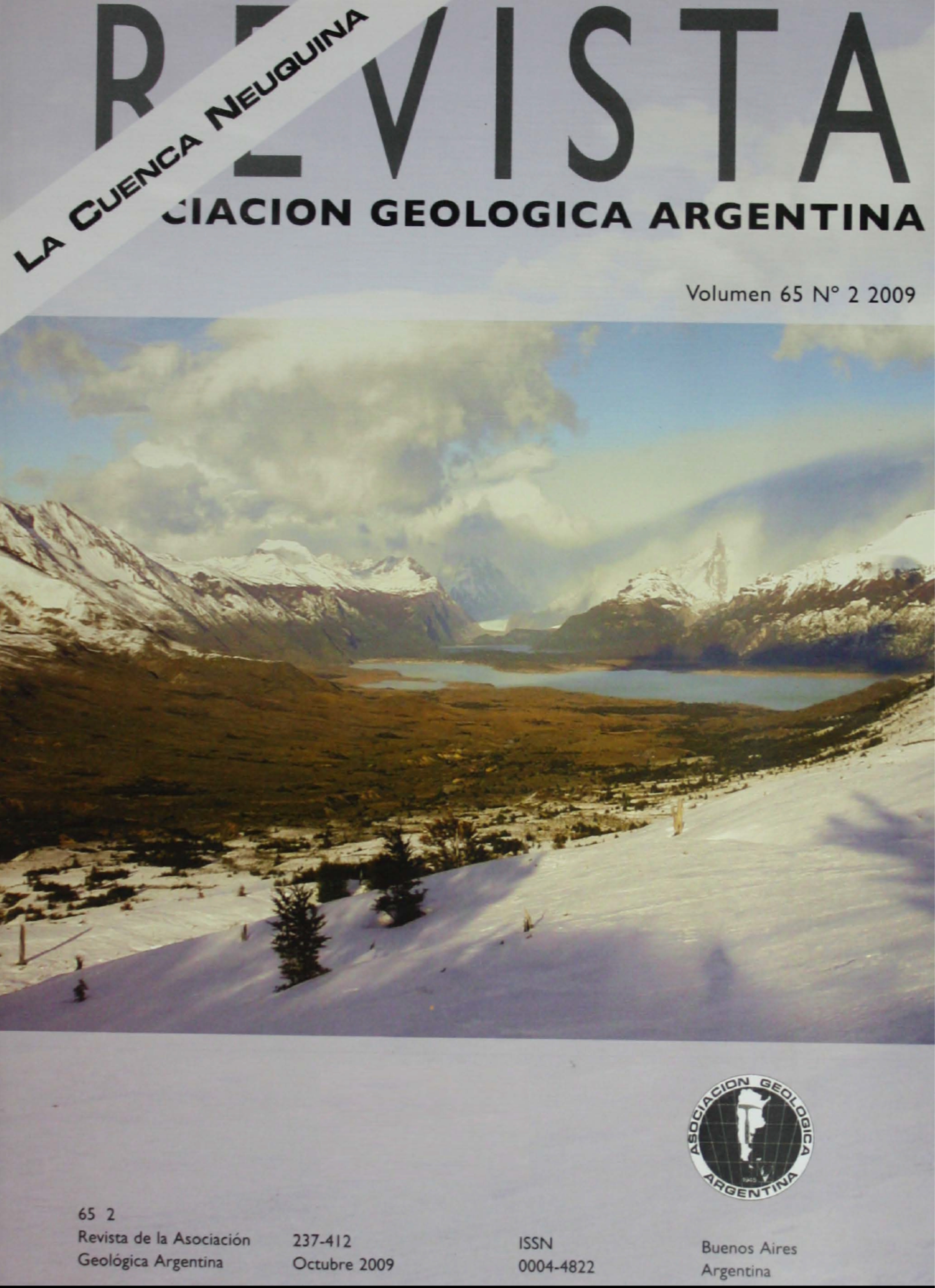Ichnological synthesis of the marine unitsof the Neuquén Basin, new data and future perspectives
Main Article Content
Abstract
In this paper the ichnology of the marineintervals of the Neuquén Basin is reviewed, taking into account anstratigraphic framework and discussing previous works on ichnology that containsome ichnogenus (Lapispira) that are firstly documented in South Americain Jurassic rocks of the Río Atuel area, and other ichnogenera that constitutewell preserved records in the Jurassic tidal influenced deltas of the LajasFormation. The trace fossil record includes Asterosoma, Asteriacites,Dactyloidites, Diplocraterion, Gyrochorte, Palaeophycus, Polykladichnus,Schaubcilindrichnus, Siphonichnus, Thalassinoides, Teichichnus and raretraces in shallow marine deposits like Helmin-thorhaphe and root tracesindicative of a very complex facies scheme. A special mention deserves thetraces from the carbonates of the La Manga Formation at Bardas Blancas, that contain ichnogenera like Dactyloidites, Gyrochorte, Jamerosonichnites and Thalassinoidesrecorded in tempestites. The Lower Cretaceous record documented in theMulichinco and Agrio Formation is composed of Asteriacites, Gyrochorte,Lockeia, Ophiomorpha, and possibly Bergaueria, documented in theMulichinco Formation at Vega de Escalone locality. Other ichnofossils describedin the Agrio Formation are Gyrochorte, Ophiomorpha, Thalassinoides,Teichichnus among others of dubious assignation recorded at Bajada delAgrio and other areas of the basin. New material coming from both unitsincludes subaqueous vertebrate scratchs (Characichnos?) both from Vegade Escalone and Puerta Curaco. Arthropod trackways include both some withdifferentiated (Diplichnites?) and other specimen with undifferentiatedappendages. In the case of the Agrio Formation at Cerro Rayoso, teropod tracksare indicatives of subaerial exposure in sections expected to be fully marine.Complex traces assigned to Hillichnus produced by tellinacean bivalvesare the only record of such bivalves in the basin. Those ichnogenera are goodexamples that precede body fossil records and along with the scratch markssuggest very shallow and occasional subaerial exposition in areas of the basinunexpected according to paleogeographic maps. Finally a brief analysis of thefurther work in the turbidites of the Molles Formation or the exploration ofbioerosion and meiofauna records suggest that the knowledge about the ichnologyof the Neuquén Basin is in its infancy if it is compared with the stratigraphic,paleontologic (biostratigraphic) and sedimentologic studies and also remainsunexplored related to changes in permeability of reservoirs of bioturbateddeposits documented from cores.
Article Details

This work is licensed under a Creative Commons Attribution-NonCommercial 4.0 International License.
Nota de copyright
Los autores conservan los derechos de autor y garantizan a la revista el derecho de ser la primera publicación del trabajo licenciado según una licencia de atribución Creative Commons que permite a otros compartir el trabajo con el reconocimiento de la autoría y de la publicación en la que se publicó por primera vez.
Declaración de privacidad
Los nombres y direcciones de correo electrónico introducidos en esta revista se usarán exclusivamente para los fines declarados por esta revista y no estarán disponibles para ningún otro propósito u otra persona.

